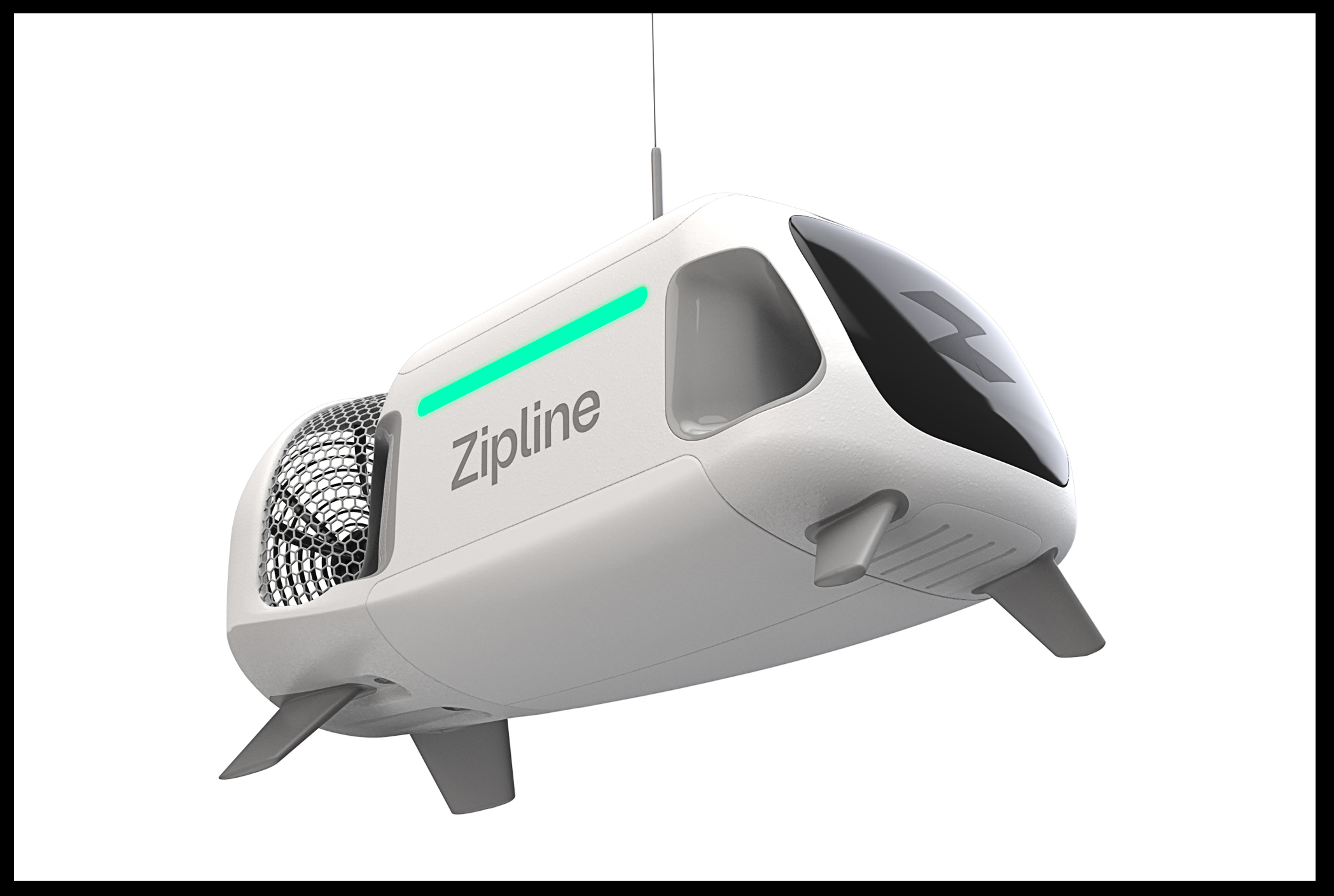In 2012, a flying machine that delivered tacos to your door was a far-off dream. Today, a local company says it is well on its way to deploying autonomous delivery drones.
It may look and sound like science fiction, but South San Francisco startup Zipline created something of a stir on Twitter yesterday after revealing its next-generation “delivery droid,” dubbed Platform 2 or P2 for short.
1/ Today, Zipline unveiled our next generation delivery drone system, designed to provide the best home delivery service the planet has ever seen. It's so out-there that you probably won't believe your eyes… 🧵 pic.twitter.com/Ks7df4DVKD
— Ryan Oksenhorn (@ryanzip) March 15, 2023
The company is working on a prototype capable of lowering packages, via a retractable tether line, from a high-flying, battery-powered “mama drone” to doorsteps below. Zipline says that the vehicle is capable of carrying payloads as heavy as 8 pounds within a 10-mile service radius and can fly as far as 24 miles. Zipline also touts that the machine doesn’t even purr and can precisely deliver in any open space, so long as it has a clear radius of just under 2 feet.
“The delivery droid is silent and cute,” wrote Zipline’s co-founder Ryan Oksenhorn in a series of tweets. “The drone is literally just a silent speck in the sky.”
But why would you want to have your tacos or Friday night pizza delivered by drone? The company says that P2 is faster than traditional automobile delivery, could put an end “porch pirates” and can complete 10 deliveries in 10 minutes. Zipline also says that P2 can handle a vast array of deliveries, from food to urgent prescriptions—earlier iterations of the drone have performed parachute drops of vaccines, blood and medical supplies in Rwanda for years—and that its technology could drastically lower emissions if it were to replace automobile delivery.
The company also envisions a world of docking stations where the drones can recharge and “loading portals” where the machines can easily be reloaded. Teleporting may not quite be a thing just yet, but Zipline bills the process as the closest thing to it.
9/ The other breakthrough innovation is how easy it is for anyone to teleport goods, using what we call the loading portal. A droid magically appears inside your back-of-house business. Simply open its lid and drop the goods in pic.twitter.com/yLMJmBz1RR
— Ryan Oksenhorn (@ryanzip) March 15, 2023
Yesterday’s reveal kicks off a series of high-volume test flights for P2 to be followed by a customer pilot flight expected early next year. Zipline has completed over 500,000 deliveries to date, and expects to complete one million deliveries by the end of 2023. Here’s a video of how it works.
